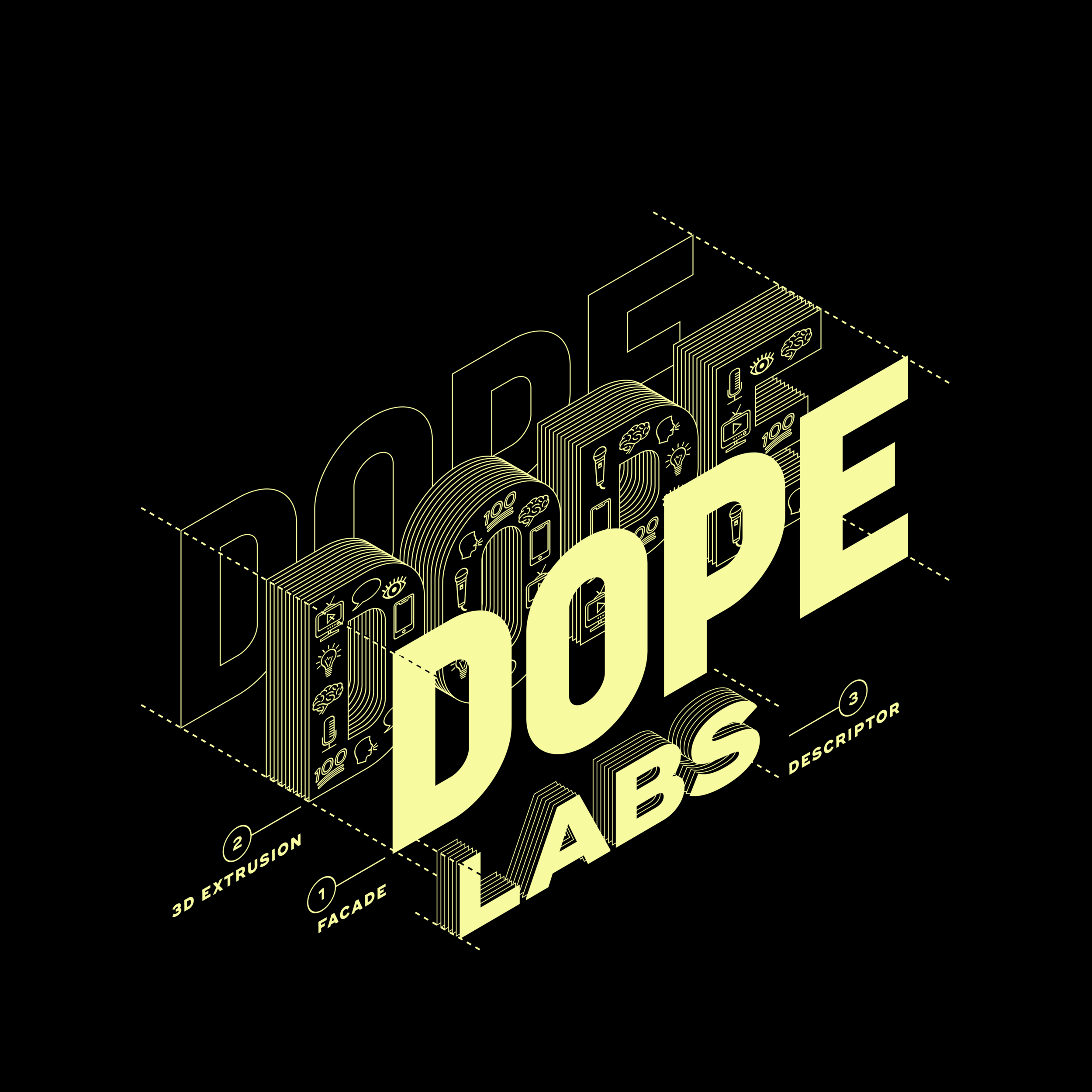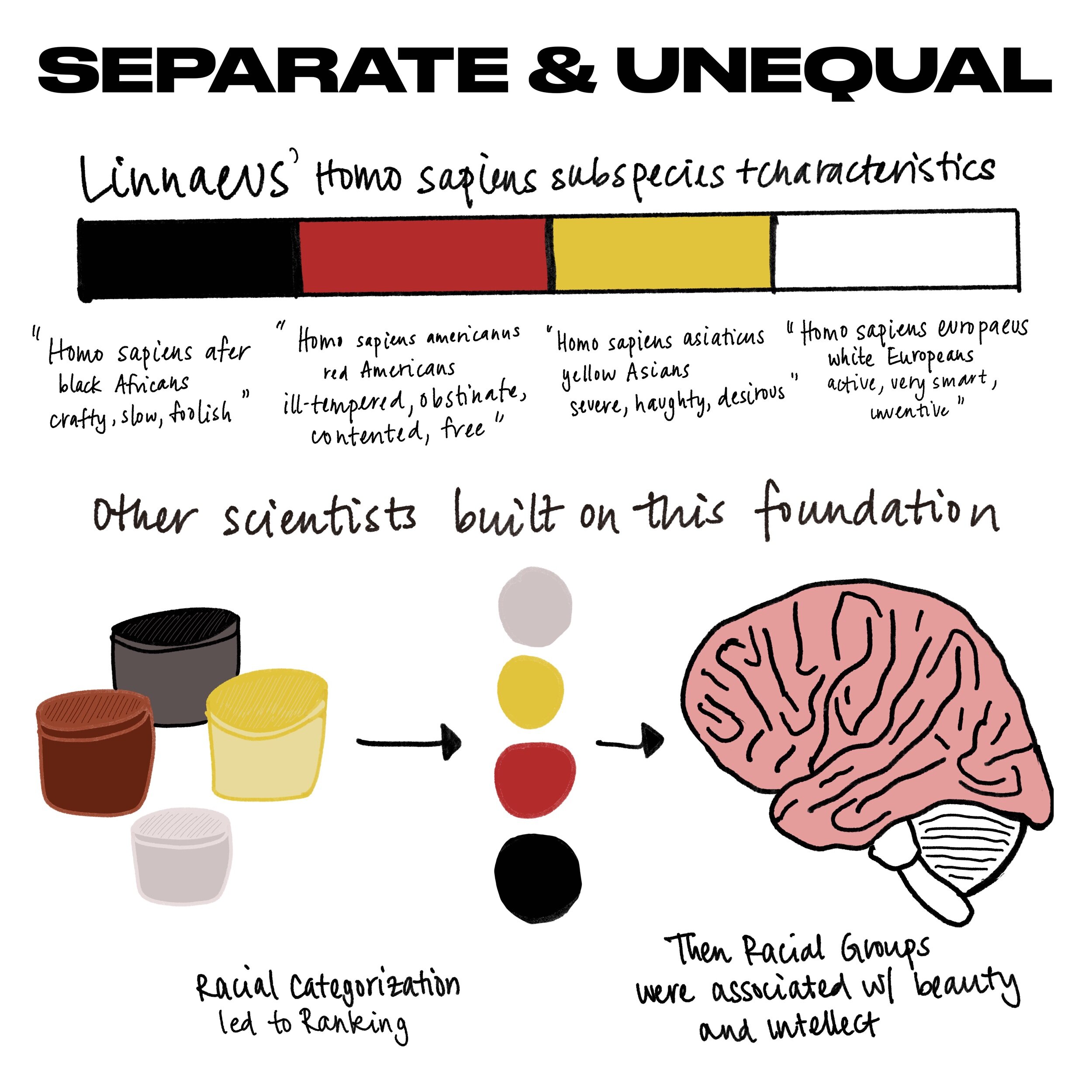Lab 025 - Skin Deep
We’re so excited to be back with more Dope Labs!
Lab 025 is the first lab of Semester 3, and we jumped right in with the latest events. Across the world, people are protesting and speaking out about racism & police brutality on the heels of the murders of Ahmaud Arbery, Breonna Taylor, George Floyd, and countless others. If you are looking for ways to help The Movement use this link to find resources where you can donate, sign petitions, make calls, etc.
The Intertwined History of Race and Science
Context
We often encounter a line of thinking that suggests science is always impartial or completely objective. Reader, I have news for you - that is not the case.
Expert
Our guest expert Angela Saini, is an award-winning science journalist and has been featured in The Sunday Times, Nature, New Scientist, National Geographic and Wired. She is the author of Inferior: How Science Got Women Wrong and Superior: The Return of Race Science.
Recitation - Starting Knowledge
There are three major pieces of information you should understand for the dissection.
There is no biological basis for race. All people have the same sets of genes, and the major variations (think signatures of specific genes) appear in all groups. In other words, our genetic Venn diagrams overlap. There’s no biological support for discrete races.
We are all members of the same species (Homo sapiens) with varying degrees of relatedness. We all trace back to the same early ancestors in Africa, who then migrated as smaller groups.
When one group is oppressing another, there’s usually a system in place - class, race, caste, and religion are all examples.
“The arrows symbolize migration of early human ancestors out of Africa. The color mosaic denotes global population diversity resulting from various subsequent inter- and intra-continental and regional migrations…” - Source: Royal, CD, et. al. “Inferring Genetic Ancestry: Opportunities, Challenges, and Implications” The American Journal of Human Genetics, ISSN: 0002-9297, Vol: 86, Issue: 5, Page: 661-673
Dissection
Our interview with Angela Saini started with the Enlightenment, or the Age of Reason (1685-1815). Her book highlights that the Enlightenment is responsible for the invention of race as we now know it. Much of this traces back to Carl Linnaeus, the father of taxonomy. In Systema naturae (1758), he divided humans (Homo sapiens) into four major races and assigned characteristics to these groups, which we know are totally false.
Homo sapiens europaeus (“white Europeans”) - “active, very smart, inventive.”
Homo sapiens asiaticus (“yellow Asians”) - “severe, haughty, desirous.”
Homo sapiens americanus (“red Americans”) - “ill-tempered,…obstinate, contented, free.”
Homo sapiens afer (“black Africans”) - “crafty, slow, foolish.”
Notice anything strange here? Any bias? Unfortunately, this thinking wasn’t isolated, it dominated biological thinking for many years all the way through the early 20th century.
Eugenics
We quickly highlighted Eugenics, but this really could have been its own lab. There’s a ton of information available about the global Eugenics movement, but we’re sharing a couple of key resources below.
The term “eugenics” was coined by Sir Francis Galton, cousin of Charles Darwin, in 1883.
Karl Pearson was considered a founder of modern statistics and inventor of statistical concepts like the law of regression, p-value, the histogram, and Pearson’s chi-squared test. He was a well-known Eugenicist and advocated “war with inferior races.”
Eugenics was publicly accepted and encouraged to protect society from those deemed inferior - often the poor, mentally ill, and people of color.
The Eugenics movement wasn’t just in Europe. As a matter of fact, Hitler got his ideas from the American Eugenics movement.
In the US, a 1927 Supreme Court ruling allowed states the right to force sterilization if someone was considered “unfit”. “As many as 70,000 Americans were forcibly sterilized during the 20th century.”
In North Carolina, Orange County was one of the first to target members of the general population for sterilization, not just those in institutions.
Looking Forward
We asked how scientific racism continues to have a hold even to this day? What happened to scientists of the Eugenics Movement once WWII ended? Did this pseudoscience touting race as a biological difference, simply go away? Not quite.
Science has continued to play a role in supporting racism and racist policies that manifest as inequities in health and disproportionate police violence. Even though race is not biological, it still governs society & daily interactions. What is necessary for change?
Books & More Things to Read
Superior: The Rise of Race Science by Angela Saini (paperback, audiobook, Audible)
Racecraft by Karen E. Fields and Barbara J. Fields (paperback, ebook)
American Society for Human Genetics Denounces Attempts to Link Genetics and Racial Supremacy
Medical Apartheid by Harriet Washington (paperback)
“The Genetic Archaeology of Race” by Steve Olson in The Atlantic - Excerpt: “Over the past decade or so genetics researchers have been undermining the widespread belief that groups of people differ genetically in character, temperament, or intelligence. They have shown that all human beings are incredibly similar genetically—much more so than other species of large mammals. They have revealed the folly of attributing group behavioral differences to biology rather than culture.”
Invitation to Anthropology by Luke Lassiter (Evolution and the Critique of Race)
Hitler’s American Model by James Q. Whitman
Race and Racial Identities Are Social Constructs by Angela Onwuachi-Willig
Understanding Our Eugenic Past to Take Steps Towards Scientific Accountability by Rori Rohlfs


